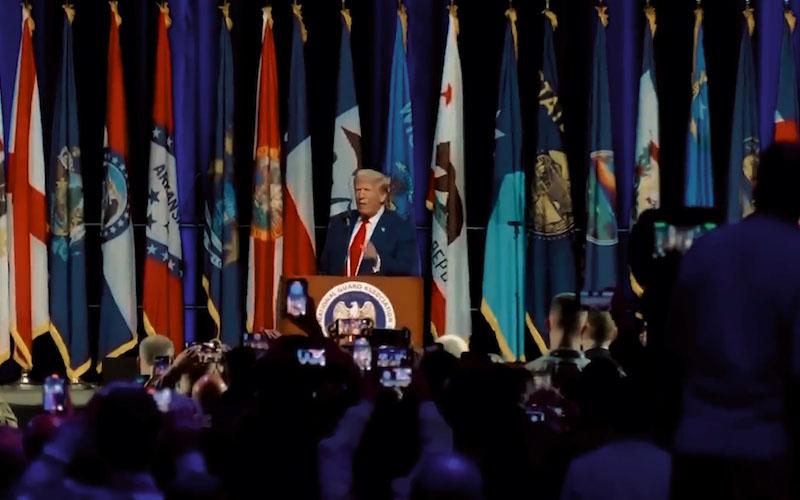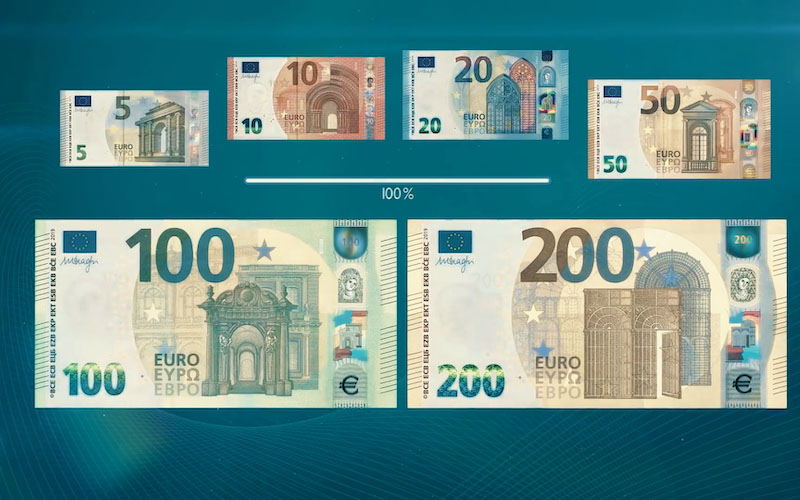Analysis of the 2025 Russia-US Summit: A Comprehensive Solution Is Difficult to Achieve
2025-08-15 20:30:55

The Russia-Ukraine conflict has raged for three and a half years, leaving both sides exhausted by the stalemate on the battlefield. Western sanctions are weighing on Russia's economy, with the World Bank forecasting only 1.4% economic growth in 2025, a significant drop from the 4.3% projected for 2024. Trump has made ending the conflict a diplomatic priority during his second term, proposing economic pressure such as "secondary sanctions" to force Russia to compromise. The conflict has roiled global energy markets, with Brent crude oil prices falling to $66.43 per barrel, reflecting geopolitical risks and uncertainties surrounding economic recovery.
Prior to the summit, the US and Russia reached four points of consensus through secret contacts (such as the February Trump-Putin phone call and the Saudi-Riyadh talks): establishing a consultation mechanism, normalizing diplomatic relations, negotiating the Ukraine issue, and cooperating on economic issues. The summit garnered global attention, but Ukrainian President Volodymyr Zelensky's non-invitation sparked controversy, with European leaders expressing concern that Trump might reach a unilateral agreement that would harm Ukraine's interests. Saudi Arabia's role as a neutral mediator underscored its diplomatic influence.
Trump's related remarks
Trump's statement combined toughness with pragmatism, emphasizing the urgency of ending the Russia-Ukraine conflict. He expressed his hope for an "end of the war within days or weeks" and set August 15 as the deadline for Russia to agree to a ceasefire, threatening to impose secondary sanctions of up to 100% on Russian trading partners (such as India and Brazil). He proposed a "territorial swap" as a potential ceasefire solution, suggesting that Ukraine might give up some Russian-occupied territory in exchange for peace, but pledged to "do everything possible to get some territory back for Ukraine." This proposal sparked strong opposition from Ukraine and Europe.
Trump also warned that if Putin does not cooperate, he will face tougher sanctions, including restrictions on Russian energy exports, and has announced a 25% tariff on India (for its purchase of Russian oil).
In addition, he hinted that the summit might discuss a nuclear arms control agreement, saying that Putin proposed a "possible nuclear deal" as a breakthrough point for compromise between the two sides.
Bloomberg analysis suggests that Trump's tough stance is primarily aimed at showcasing diplomatic achievements for domestic voters, while the "territorial swap" could weaken US leadership in Europe. The FT commented that his tariff policy could drive up global inflation and trigger a trade war.
Russia responds
Russia's response, led by Putin and his team (including Foreign Minister Lavrov, Presidential Assistant Ushakov, Defense Minister Belousov, Finance Minister Siluanov, and investment fund head Dmitriev), was tough but left room for compromise. Putin expressed openness to negotiations but stressed the need to achieve the objectives of Russia's "special military operation," including Ukraine's abandonment of NATO membership and recognition of Russian control over four regions, including Donetsk.
Kremlin spokesman Dmitriev stated that Russia's battlefield advantage (controlling 18% of Ukraine's territory) strengthens its negotiating initiative. Putin dismissed Trump's sanctions threats, stating that Russia has adapted to them and warning of possible retaliatory actions against Ukraine (such as in response to Ukrainian drone attacks). Dmitriev raised the prospect of economic cooperation, stating that lifting sanctions could generate hundreds of billions of dollars in benefits for American and Russian companies, particularly in Arctic energy projects.
Lavrov reiterated that NATO's military presence in Ukraine is a "direct threat" and demanded that a peace agreement include Ukraine's neutrality and limits on NATO's eastward expansion. Reuters pointed out that Putin's toughness stems from battlefield advantages, but economic pressure may force him to seek compromise.
Meeting Process
According to CNBC, the summit began at 11:30 a.m. local time (3:30 p.m. Eastern Time) on August 15 at Elmendorf-Richardson Military Base.
Trump and Putin will first make brief public remarks and pose for a photo. Saudi Arabian representatives may briefly attend to preside over the opening. The two sides will then enter closed-door talks. The first phase will be a one-on-one meeting between Trump and Putin, with only an interpreter present, to discuss sensitive topics such as the Russia-Ukraine conflict and nuclear arms control, lasting one to two hours. The second phase will be an expanded meeting, with Russian representatives including Lavrov, Belousov, Siluanov, Dmitriev, and Ushakov, and US representatives including Secretary of State Rubio, National Security Advisor Waltz, and Special Envoy for the Middle East Witkoff. Topics will cover Ukraine, sanctions relief, and economic cooperation.
At noon, the two sides shared a "very delicious lunch" and held informal discussions to prepare for subsequent talks (such as the inclusion of Ukraine). In the afternoon, a special working group was established to conduct in-depth discussions on the ceasefire framework, security guarantees, and territorial issues, and may reach a preliminary agreement on ambassadorial appointments and diplomatic normalization.
In the evening, Trump and Putin held a joint press conference to summarize the progress of the negotiations (such as the consultation mechanism and the timetable for Ukraine negotiations), which became the most anticipated event of the year. Trump may comment via Truth Social, and Putin may respond through Russian media. Ukraine's non-invitation sparked controversy, and Trump suggested that Zelenskyy might be included later.
Affirming the value of the summit
The Financial Times considered the summit a breakthrough in the reset of US-Russia relations. Russian analyst Shapovalov said it could bring about "significant changes" and lay the foundation for economic and diplomatic cooperation. Ushakov said the Alaska venue symbolized overcoming a "negative burden" and emphasized trade potential. Lavrov hinted that Arctic energy projects could attract American companies.
POLITICO pointed out that the four-point consensus reached in the Saudi talks laid the foundation for the summit. Trump's sanctions pressure may force Putin to soften his stance, and Russia has reportedly reduced its territorial demands.
Reuters believes a nuclear arms control agreement could be a breakthrough for compromise. If a ceasefire is achieved, the decline in geopolitical risk premiums will benefit the energy market. Dmitriev, head of a Russian investment fund, emphasized that lifting sanctions could generate hundreds of billions of dollars in benefits and attract American business interests. Some believe the summit provides a window for de-escalating the Russia-Ukraine conflict and normalizing US-Russia relations, and that economic cooperation (such as in Arctic energy) can stabilize global markets.
Questions about the summit's impact
Reuters reported that European leaders opposed unilateral agreements. Zelensky called the decision excluding Ukraine "meaningless." EU foreign policy chief Kallas and German Chancellor Merz stressed that Ukraine must participate.
The Carnegie Endowment analyzed that Putin used his battlefield advantage (controlling 18% of Ukraine's territory) and Trump's political pressure to adopt a delaying strategy, and may only exchange a limited ceasefire for diplomatic recognition.
Martin Wolf, chief economic commentator of the Financial Times, warned that Trump's secondary sanctions and tariff policies could trigger a trade war, push up inflation and impact emerging markets.
GovFacts believes that the 25% tariff on India could damage US-India relations, with India's Ministry of Foreign Affairs calling it "unfair." Goldman Sachs predicts that if the summit fails, oil prices could break through $80 per barrel, increasing the risk of supply chain disruptions.
Impact on financial assets
The summit's outcome will directly impact financial markets. In the energy market, if a ceasefire is reached, Brent crude oil prices could fall below $60 per barrel due to reduced geopolitical risks. If a ceasefire fails, secondary sanctions could push oil prices above $80 per barrel, benefiting US and Qatari LNG exporters.
In the foreign exchange market, the Bloomberg Dollar Index has fallen for five consecutive days recently. If the negotiations fail, the US dollar may rebound due to safe-haven demand; if an agreement is reached, emerging market currencies (such as the Indian rupee) may appreciate.
In the stock market, a deal could boost energy and defensive sectors, while a failure could trigger a sell-off in Asian and European equities. U.S. Treasury yields could fluctuate based on inflation expectations, and Citigroup recommends increasing holdings of inflation-protected assets such as TIPS.
As a safe-haven asset, gold's price would rise if negotiations break down; it could fall back if an agreement is reached. Commodity prices (such as wheat and metals) could rise due to Russian export restrictions, impacting global food security. Morgan Stanley warned that secondary sanctions could disrupt energy supply chains in countries like China and India, driving up global inflation.
Editorial Views
The summit is a high-risk attempt at Trump's "America First" diplomacy. While it could potentially lead to a temporary ceasefire or a nuclear arms control framework, the complexity of the Russia-Ukraine conflict (divided into areas such as territorial disputes and NATO expansion) makes a comprehensive solution difficult to achieve. Putin's battlefield advantage and delaying tactics give him the upper hand, while Trump's domestic political pressures could force him to seek short-term gains and neglect the interests of Ukraine and Europe. Risks include Ukraine's absence from the summit, which could lead to a lack of enforcement of the agreement, and secondary sanctions, which could exacerbate global economic fragmentation, drive up energy and food prices, and impact emerging markets. Opportunities include establishing a consultation mechanism or facilitating ambassadorial appointments, laying the foundation for normalizing US-Russia relations. Economic cooperation (such as in Arctic energy) could yield long-term benefits. China should be wary of the impact of secondary sanctions on Sino-Russian energy trade.
- Risk Warning and Disclaimer
- The market involves risk, and trading may not be suitable for all investors. This article is for reference only and does not constitute personal investment advice, nor does it take into account certain users’ specific investment objectives, financial situation, or other needs. Any investment decisions made based on this information are at your own risk.





















